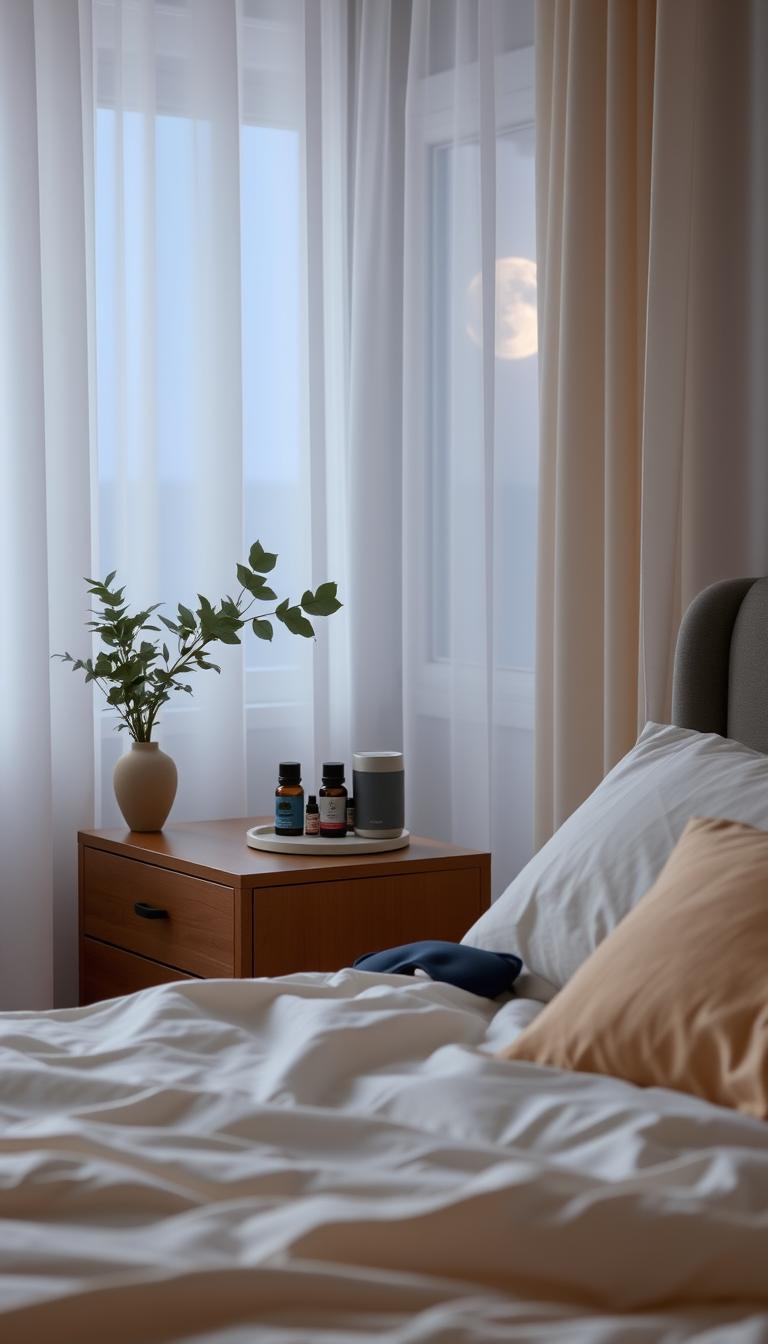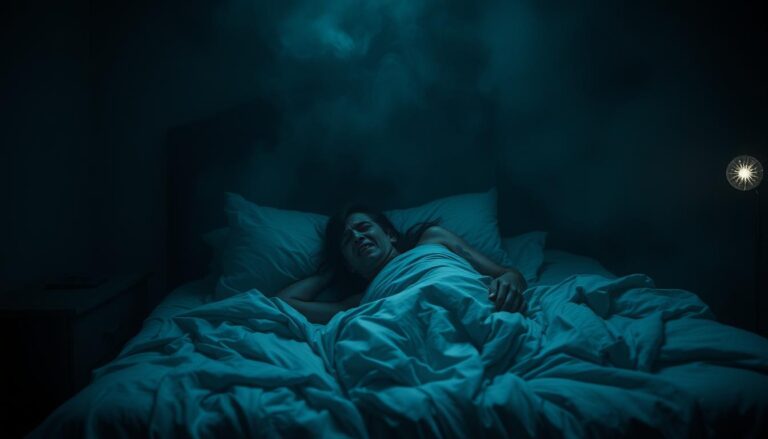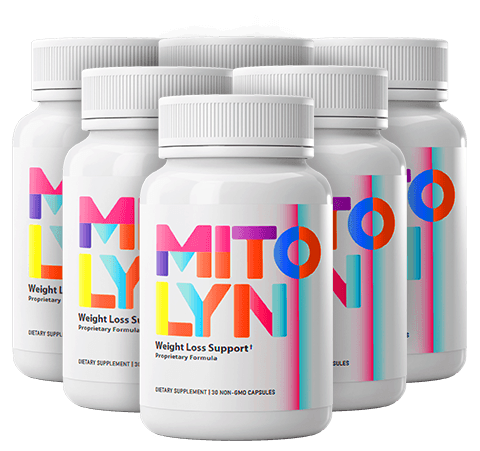
At-home sleep apnea tests are cheap, starting at $189. This is much less than the $3,000+ for lab tests. But, they have their downsides. They track breathing and oxygen levels but don’t get brainwaves or sleep stages.
Polysomnography, done in labs, gets all this data. DIY tests are 98% good at finding sleep apnea. But, they might not be as accurate for more complex cases.
Your health depends on getting a correct diagnosis. DIY tests are often covered by insurance. But, they might not catch severe cases or other sleep issues like narcolepsy.
Knowing their limits helps you decide the best way to check your sleep health.
Key Takeaways
- DIY home sleep apnea test accuracy peaks at 98% for obstructive sleep apnea but misses sleep stage data.
- In-lab polysomnography tracks brainwaves and muscle tone, which at-home devices cannot.
- Sensor displacement during sleep can skew results, risking underestimation of severity.
- Home tests cost 1/3 to 1/5 of clinical studies but require a doctor’s prescription.
- They do not diagnose central sleep apnea or movement disorders, limiting their scope.
Understanding DIY Home Sleep Apnea Tests
Let’s start with the basics. If you think you might have sleep apnea, a sleep apnea test at home can help. Here’s what you need to know.
What is Sleep Apnea?
Obstructive sleep apnea is when your throat muscles relax too much. This narrows your airway and stops you from breathing. You might snore loudly, gasp during sleep, or feel very tired during the day.
If not treated, it can lead to heart problems and high blood pressure. A home sleep apnea test can spot these risks. It tracks your breathing and oxygen levels.
The Rise of At-Home Sleep Testing
Why are at-home sleep apnea test options becoming more popular? It’s because they’re convenient and affordable. Lab tests can cost $1,000–$7,000, but home sleep apnea tests start at $150.
Medicare and some insurers cover these tests if a doctor prescribes them. Plus, 98% of users find them effective for moderate to severe cases. You don’t have to go to a lab. Just use the device in your own bed.
Types of Home Sleep Apnea Tests Available
| Type | Variables Measured | Cost |
|---|---|---|
| Type 3 | Airflow, oxygen levels, chest movement (up to 7 metrics) | $189–$349 (e.g., WatchPAT) |
| Type 4 | Airflow and oxygen levels only | $150–$250 |
Type 3 devices, like the WatchPAT, use advanced sensors. They track breathing and heart patterns. Type 4 options are simpler but still work for basic screening. Always check if your insurance covers the test you choose.
How Home Sleep Apnea Tests Work
Home sleep apnea tests collect data to check your sleep. These self-administered sleep apnea test devices track oxygen, breathing stops, and heart rate changes at night. They help us understand your health better.
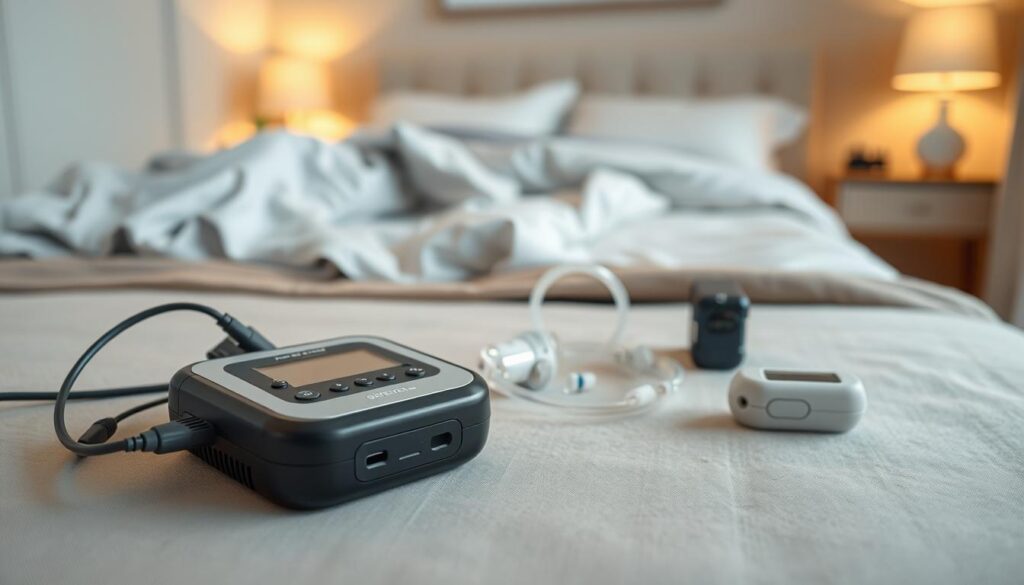
Measurements and Monitoring Parameters
These tests look at important signs:
- Oxygen saturation: A finger sensor checks blood oxygen levels.
- Respiratory effort: A chest band spots breathing trouble.
- Snoring: A small microphone near your throat records sounds.
- Apnea events: It counts breathing stops per hour.
Technology Behind DIY Sleep Tests
Modern sensors work together for easy testing. Nasal airflow sensors track blockages. Pulse oximeters clip on your finger to watch blood oxygen. The data goes to a central unit for your doctor.
This tech lets you test at home without needing a lab. It gives DIY sleep apnea test results that are often good enough.
“Home sleep studies are appropriate for patients with a high likelihood of obstructive sleep apnea,” states the American Academy of Sleep Medicine.
Step-by-Step Testing Process
Here’s what happens:
- First, talk to a doctor to see if you can do it.
- Then, get the equipment by mail or visit a clinic.
- Wear the sensors at home and sleep as you normally do.
- Send the device back the next day using the prepaid envelope.
- Get your results in 1–2 weeks for your doctor to review.
Following the instructions well is key for good results. Properly placing the sensors and keeping your sleep habits consistent helps. This makes the self-administered sleep apnea test a good choice for many.
DIY Home Sleep Apnea Test Accuracy: What Research Shows

Studies reveal DIY home sleep apnea test accuracy depends on how bad it is. Devices can spot severe cases most of the time. But, they might miss mild ones.
A 2023 study in the Journal of Clinical Sleep Medicine found a big issue. It showed 30% of mild cases were missed by home tests.
- Type 3 devices track 8 metrics like oxygen levels and breathing pauses.
- Lab studies cost $2,500–$5,000 vs. home tests priced at $219.
| Severity | Accuracy Range | Recommended Follow-Up |
|---|---|---|
| Moderate-Severe OSA | 92–95% | Repeat home test or clinical confirm |
| Mild OSA | 65–70% | Requires in-lab polysomnography |
Home tests are good for spotting severe sleep apnea. They work well when you have loud snoring or feel tired all day. But, they might not catch mild cases.
Getting the test right is key. The sleep apnea screening accuracy can drop by up to 20% if it’s not set up right. This is according to 2024 AASM guidelines.
Thorne’s testing shows how tracking hormones can help. A recent study found morning melatonin levels were very high. This shows sleep was disrupted.
This info helps doctors make better treatment plans. It’s important to get a doctor’s opinion on test results. Over 39 million Americans don’t know they have sleep apnea.
Using these tests right is crucial. Knowing their limits is just as important.
Clinical Sleep Studies vs. At-Home Testing
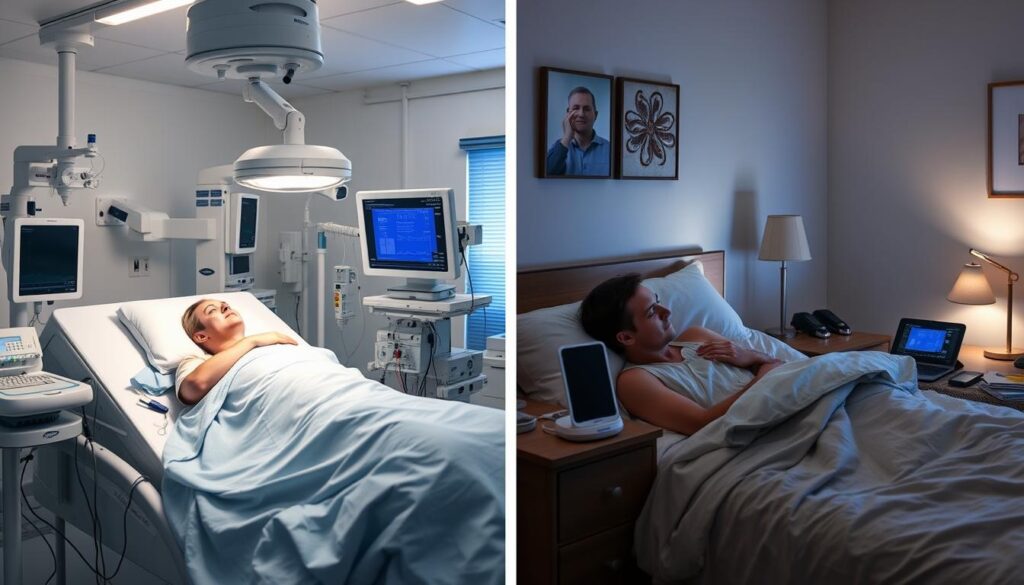
Choosing between a clinical sleep study and anat-home sleep apnea testdepends on your health needs. Both aim to ensuresleep apnea diagnosis accuracy. But they differ in how they approach and how practical they are.
| Comparison | Clinical Sleep Study | At-Home Test |
|---|---|---|
| Accuracy | Monitors 15+ body metrics with real-time staff oversight | Tracks 8 key metrics like oxygen levels and breathing patterns |
| Cost | $1,000–$7,000 (often requires prior authorization) | $150–$500 (covered by many insurers with a doctor’s order) |
| Comfort | Requires an overnight lab stay with 20+ sensors attached | Use wireless devices worn in your own bed |
Clinical studies are better at finding rare disorders like narcolepsy. At-home sleep apnea test systems mainly look for OSA. Many insurance plans cover home tests after a doctor says you might have it.
For most adults with suspected OSA, home testing is a good start. But if you have heart disease, lung issues, or neurological problems, lab studies are better. They watch you more closely.
- Lab studies cost 3–10x more than home kits
- Home tests take 3–4 hours of sleep to generate results
- 70% of insurance plans now cover FDA-cleared home devices
If you have complex health issues or unusual symptoms, a clinical study is better. It misses no important details. For simple OSA cases, anat-home sleep apnea test is cheaper and still very accurate.
Benefits and Limitations of Self-Administered Sleep Apnea Tests
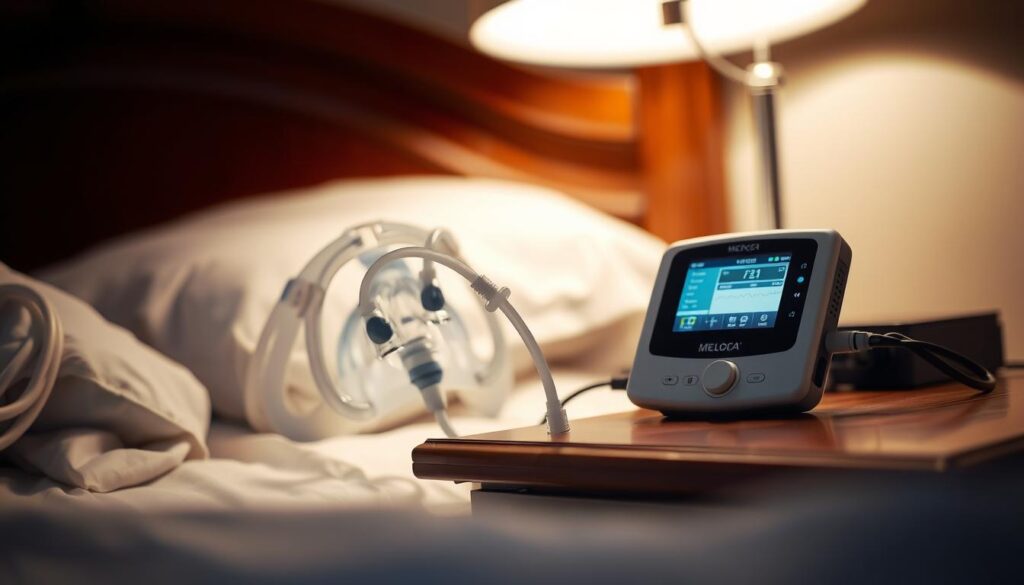
Self-administered sleep apnea tests save time and money but have clear trade-offs. Here’s what you should know:
Key advantages include:
- Lower cost: At-home options like the Itamar WatchPAT-One cost $189, while lab studies average $3,000+.
- Comfort: Sleep in your own bed without lab anxiety.
- Fast results: DIY sleep apnea test results can reach your doctor quickly, speeding up treatment plans.
Limitations include:
- Lower accuracy for mild cases (AHI 5–14) due to fewer sensors.
- No EEG monitoring, limiting insight into sleep stages or other disorders.
- Technical risks like sensor shifts or short recording times.
Most devices measure breathing patterns and oxygen levels but miss brain activity. Even at 98% effectiveness for severe cases, up to 24 million Americans with symptoms may still need lab confirmation. For instance, type 4 devices track only 3 metrics, while labs monitor 10+ parameters. If your DIY sleep apnea test results are negative but you still gasp during sleep, ask about further testing.
These tests work best for clear-cut breathing issues. Discuss results with a doctor to decide if a lab study is needed. Prioritize accuracy when symptoms persist despite negative results.
Conclusion: Making an Informed Decision About Home Sleep Apnea Testing
Deciding between a home sleep apnea test or a clinical study depends on your symptoms and medical history. Accuracy of DIY sleep apnea test devices is high for severe cases. But they might miss milder conditions.
If you’re a 65-year-old man with snoring and breathing pauses, these tests can quickly spot issues. But for others, like younger women with less obvious signs, a lab-based study might be better. Always talk to a doctor first to decide what’s best for you.
Home tests save time and cost, but they’re not perfect. Studies show 80% of people with symptoms go undiagnosed because of barriers like lab testing inconvenience. If your home sleep apnea test results are positive, a doctor can prescribe treatment like CPAP machines.
But even if results are negative, persistent symptoms mean you should seek further evaluation. Remember, lab studies are crucial for complex cases involving other health issues.
Technology improves, but human guidance matters most. A 2014 study found CPAP use lowers heart risks. Yet, 33% of users stop due to discomfort. Discuss options like device adjustments with your provider to ensure long-term adherence.
For example, if a home test shows mild results, your doctor might suggest lifestyle changes instead of immediate CPAP use.
Your health depends on accurate diagnosis. Whether using a home sleep apnea test or a lab study, prioritize follow-up care. Early detection reduces risks like heart disease and stroke. Take the first step today by talking to your healthcare provider about testing options tailored to your situation.






